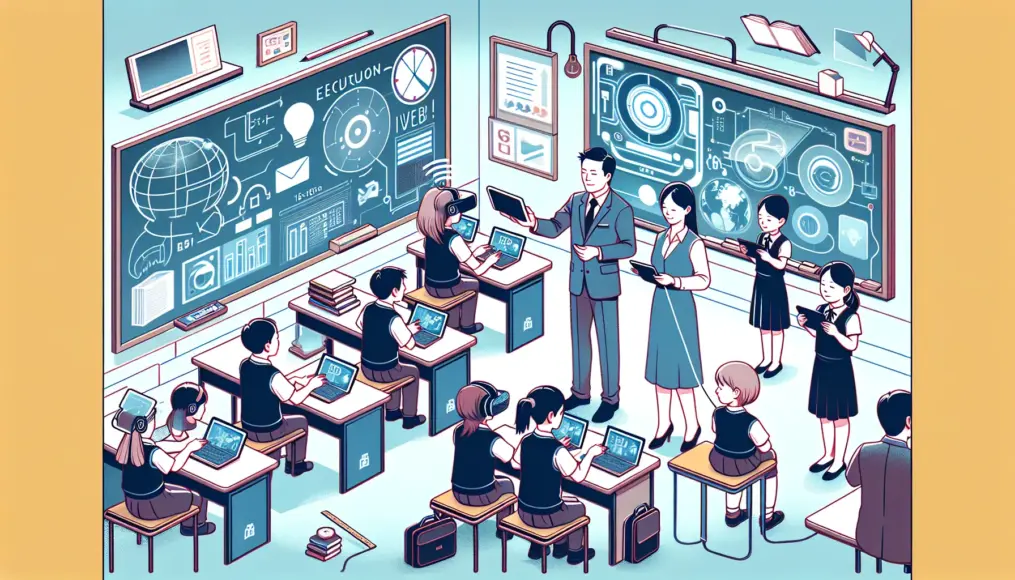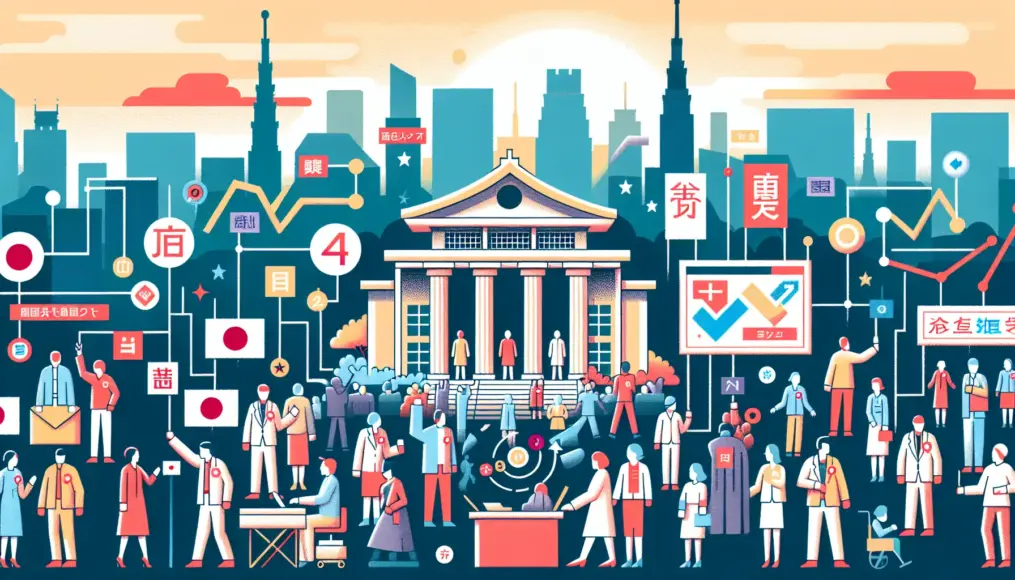Education is a crucial element that shapes our future. However, with the rapid changes in modern society, there is an increasing need to reevaluate our education system. Particularly in an era marked by technological advancements and globalization, traditional educational methods are struggling to address emerging challenges. Let’s explore the reasons behind the need for educational reform and what the future might hold.
Moreover, educational reform goes beyond mere changes in the system; it significantly influences how we learn and think. By delving into the possibilities that new educational approaches can offer, we may be able to sketch out a vision for the future of education. Together, we will examine the specific needs for reform and look at real-life examples to consider the direction education is heading.
- An overview of the background prompting educational reform in modern society
- Insights into the specific necessities driving educational reform
- A glimpse into the prospects and potential of future education
The Background Behind the Demand for Educational Reform in Modern Society
In today’s rapidly changing world, the needs surrounding education are evolving significantly. As technology advances and globalization reshapes our lives, it has become clear that traditional educational systems are struggling to keep pace with new challenges. This context highlights the urgent need for educational reform. Seeking a form of education that aligns with the demands of a new era will be key to enriching our future.
The Impact of Technological Advancement on Education
Technological progress has profoundly influenced both the methods and content of education. For instance, the widespread availability of the internet allows us to access information instantaneously. However, this shift necessitates the ability to discern and critically evaluate information, a skill that traditional education has not adequately addressed. Moreover, as new learning methods utilizing technology emerge, educational institutions are grappling with their implementation.
Additionally, the role of teachers is also evolving. Traditionally, teachers were primarily responsible for imparting knowledge. Now, there is a growing expectation for educators to foster students’ ability to take initiative in their own learning. To meet these demands, a comprehensive reform of the education system is essential.
- We will examine the impact of technological advancement on education
- We will explore the introduction of new learning methods
- We will focus on the changing role of teachers
The Changes in Education Due to Globalization
As globalization advances, it is increasingly important for education to embrace an international perspective. There is a demand for education that fosters understanding and coexistence among different cultures and values. This shift requires a transition from a domestic-centered educational approach to one that incorporates a global viewpoint.
Moreover, the significance of multilingual education, particularly in English, is on the rise. By nurturing international communication skills, we can better prepare students for successful careers and active participation in society. To adapt to these changes, educational reform is necessary.
As we reflect on modern educational reform, there are other insightful articles that provide additional perspectives. For example, the article “What Impact Did Post-War Educational Reform Have on Japanese Society?” offers a detailed analysis of how educational reforms after World War II influenced society as a whole. Understanding the evolution of education can deepen our appreciation for the importance of current reforms.
- We will examine the impact of globalization on education
- We will discuss the importance of cross-cultural understanding
- We will highlight the necessity of multilingual education
The Urgent Need for Education Reform
The current education system faces numerous challenges that extend beyond mere academic performance and grades, impacting students’ futures in significant ways. The call for education reform stems from the necessity to address these issues and create a better educational environment for the future. Understanding the specific need for reform can illuminate the path toward more effective education.
Current Issues
In many cases, the existing education system employs a one-size-fits-all approach to learning. This uniformity leads to a lack of tailored education that addresses the unique characteristics and needs of each student. For instance, using the same teaching methods for students who progress at different rates can result in some students struggling to keep up. Additionally, the emphasis on standardized testing often comes at the expense of fostering creativity and critical thinking skills, which are essential for holistic development.
Moreover, the increasing burden on teachers poses a significant problem. With demands for lesson planning and student assessment consuming their time, opportunities for personalized instruction and meaningful communication with students often fall by the wayside. As we can see, the current educational landscape is rife with challenges that necessitate reform.
- The uniformity of the current education system is problematic.
- There is a lack of tailored education for individual student needs.
- The increasing burden on teachers is a growing concern.
Reasons for Reform
The need for education reform lies in our responsibility to cultivate individuals who can thrive in the future society. Our world is changing rapidly, and the skills and knowledge required to succeed are evolving daily. To keep pace, our education system must also adapt flexibly. It is especially important to nurture critical thinking and problem-solving abilities, which are increasingly demanded in today’s society.
Furthermore, reform is essential to ensure equity in education. Providing equal learning opportunities for all students fosters respect for diversity and helps build a society where everyone can thrive. Education reform is not merely about changing policies; it is also about contributing to the overall development of society.
When considering the importance of education reform, it is vital to look at the broader societal changes at play. An intriguing aspect is how education reform ties into public policy. If you’re interested in this topic, check out this article on “A New Perspective on Public Policy: Rethinking with a Contrarian Approach.” It explores the significance and impact of public policy from a fresh angle, potentially offering insights for education reform.
- We need to cultivate individuals who can thrive in future society.
- Ensuring equity in education is crucial.
- It is key to realizing a society that respects diversity.
The Future of Education: Prospects and Possibilities
The future of education is poised for significant transformation, driven by technological advancements and societal changes. One of the most promising developments is the integration of digital education, which has the potential to dramatically reshape learning environments. As educational approaches that respect diversity continue to evolve, we are moving toward a setting where all students can learn at their own pace. These elements combined are set to enrich the educational landscape of the future.
The Potential of Digital Education
Digital education represents a new way of learning that leverages the internet and technology. With the rise of online resources and educational apps, students can progress through their studies at a pace that suits them. This shift allows for a variety of learning methods beyond the traditional classroom, paving the way for a more personalized education experience.
Moreover, digital education transcends geographical boundaries, offering opportunities for students in remote areas to access high-quality instruction. This capability holds promise for narrowing educational gaps, ensuring that every student has a chance to learn in an equitable environment.
- Digital education enables a variety of learning methods
- Educational opportunities that surpass geographical limits
- Potential to reduce educational disparities
Education that Respects Diversity
Education that values diversity emphasizes the importance of students from different backgrounds and perspectives learning together. This approach fosters understanding and empathy among students, helping them appreciate diverse viewpoints. By embracing diversity in educational settings, we can create richer learning environments.
Furthermore, education that respects diversity allows for a deeper understanding of individual student characteristics, providing opportunities for personalized instruction. This tailored approach ensures that each student can grow at their own pace, developing the skills necessary for success in the future society.
- Respecting diversity cultivates empathy
- Increased opportunities for personalized instruction promote growth
- Creates a richer learning environment
Examples of Ongoing Educational Reform
Educational reform is taking place in various forms both domestically and internationally. In Japan, there has been a notable push for the introduction of new teaching methods and the development of community-based educational programs. Success stories from abroad offer valuable lessons that can be applied here. Let’s explore specific examples of efforts aimed at realizing educational reform.
Domestic Examples in Japan
In Japan, initiatives are underway to promote “new styles of learning.” One prominent method being adopted is project-based learning, which provides students with opportunities to tackle real-world problems. This approach moves away from traditional rote memorization and emphasizes the acquisition of practical skills.
Additionally, education programs that leverage local characteristics are gaining attention. By collaborating with local businesses and organizations, these programs offer students hands-on learning experiences that deepen their understanding. Such examples highlight the importance of connecting educational reform with the local community.
- Project-based learning is being advanced
- Learning through real-world experiences is emphasized
- Education programs in collaboration with the local community are gaining traction
Successful Examples from Abroad
Globally, there are numerous success stories in educational reform. For instance, Finland’s education system is internationally recognized for its “student-centered approach.” Here, teachers tailor their instruction to meet individual student needs, focusing on fostering creativity and critical thinking. This method not only enhances the enjoyment of learning but also contributes to improved academic performance.
In certain schools across the United States, digital education is being actively integrated. By utilizing online resources and educational apps, students can learn at their own pace, broadening their learning experiences. These successful cases provide many insights that Japan can draw from.
By familiarizing ourselves with various examples related to educational reform, we can deepen our thoughts on the future of education. For those particularly interested in the significance of community-based educational programs, we recommend this article, “Practical Approaches to Addressing the Low Birthrate Issue!.” It offers a fresh perspective on the role of education amid declining birth rates.
- Finland’s student-centered education is highly regarded
- Teachers provide tailored instruction based on individual needs
- American examples of digital education offer diverse learning opportunities
Conclusion
Educational reform is a crucial initiative to adapt to the changes in modern society. With advancements in technology and the increasing influence of globalization, traditional educational systems are struggling to address emerging challenges. Through specific examples, we’ve explored how educational reform is underway both domestically and internationally, revealing the potential these changes hold for enriching students’ futures.
Moving forward, education is expected to establish a more flexible and effective learning environment by embracing digital technologies and approaches that respect diversity. As transformations in educational settings progress, we hope to see an environment where every student can grow at their own pace.
- Educational reform is essential for modern society.
- Learning from specific examples both at home and abroad is important.
- Approaches that embrace digital technology and diversity are key.
Considering the future of education is a vital topic that impacts our entire society. We encourage you to share your thoughts and opinions in the comments!



Comment